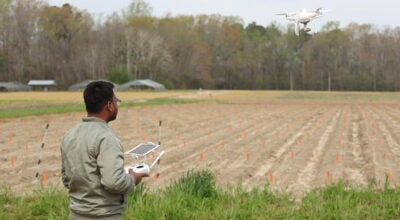Consultants closer to facility report release in January
Published 12:35 pm Thursday, December 31, 2020
|
Getting your Trinity Audio player ready...
|
Consultants assessing the facilities for Suffolk Public Schools have found numerous deficiencies in its facilities, including a trio of middle schools and a pair of elementary schools that are in poor condition.
RRMM Architects officials, who have briefed both City Council and the School Board on its findings, noted that three of the division’s four middle schools — John F. Kennedy, Forest Glen and John Yeates — are in poor condition, as are two of its elementary schools — Elephant’s Fork and Kilby Shores.
Seven more schools were rated fair — Booker T. Washington, Mack Benn Jr., Nansemond Parkway and Oakland elementary schools, as well as Nansemond River High School, Turlington Woods School and the College and Career Academy at Pruden.
Six schools, including Creekside, Hillpoint and Northern Shores elementary schools, as well as King’s Fork and Lakeland high schools and King’s Fork Middle School, rated good. None of the schools received an excellent rating, though the division’s two newest school buildings, Col. Fred Cherry Middle School and Florence Bowser Elementary School, were not part of the survey, as both opened in 2018.
The most common deficiencies found in the division’s schools include the need for roof replacements and work to heating, ventilating and air conditioning units. Other deficiencies include electrical upgrades, as well as exterior and site improvements.
In a demographic analysis of the school division, it noted a drop of enrollment of 185 students from the 2010-2011 to 2019-2020 school years. It has also developed 10-year enrollment projections by school and by grade using historical enrollment and live birth counts as inputs.
Over the next 10 years, Cooperative Strategies, who partnered with RRMM on the demographic analysis, projects an increase in enrollment from 14,322 in 2019-2020 to 14,692 in 2024-2025 and 14,995 in 2029-2030. While enrollment is “fairly stable” at most schools, it is expected to decline more at Lakeland High School, and continue to grow at Nansemond River High School.
Among the features RRMM looked at include interior and exterior architectural features, ADA compliance, building code compliance, including safety and security, as well as electrical and technological issues.
“It’s a very good study,” said Duane Harver, CEO and president of RRMM Architects, during a Dec. 10 board meeting. “I feel like we’re going to provide you with good value on each one of the schools in the study.”
Incoming Mayor Mike Duman said during the council’s briefing that a lot is riding on the findings of RRMM’s study.
“This is a fairly expensive, and it’s supposed to be a fairly complete plan, that you bring back to us,” Duman said, “that is going to establish a student generation rate based on development that we have in the pipeline, projected future development, which will be based on what type of development that is.”
Duman questioned how enrollment is projected to increase by just 673 students in the next 10 years. He also wants to see a long-term strategic plan regardless of the cost that can be prioritized by the school division, “and then we can make an honest effort to fund those requirements in the prioritization that they give us, and then that in turn can be reviewed each year.”
Said Harver in response: “I assure you that we are going to come back with numerous options that this committee will be able to review and make an informed decision based on all the costs, condition of these schools, growth, where the growth occurs, all of those things.”
Vice Mayor Leroy Bennett also thought the estimate on the increase of students was a low projection. He said the city has to look at where the growth is and build schools to serve the entire city population. Outgoing Mayor Linda Johnson said she wants to make sure that whatever comes out of the report, every student “gets that same parity of education.”
“I don’t know what you’re coming back with, but I’m looking for a couple of options, personally,” Duman said. “I’m not speaking for everybody else. One is, based on the student generation rate, where that student generation is going to be, and then how we are best able to accommodate that student generation with our existing facilities, with or without an attendance zone change, if you will.”
It has also developed a deferred maintenance schedule and calculated a facility condition rating, and it coordinated visioning exercises with stakeholders, outlining a vision for a successful graduate, the role of a teacher, capital renovation and construction and standards for the redefined facility.
Harver said the goal was to “identify a way forward by matching up the concepts and the needs with funding and trying to find some consensus on that so that action can take place.”
It expects to present its complete findings in early January,
Board Vice Chairwoman Dr. Judith Brooks-Buck noted that water has gotten inside John F. Kennedy and wondered what has to happen to declare a school “very poor,” if water getting inside doesn’t count.
Of the 18 schools surveyed, RRMM has determined that 13 to 14 will need new roofs.
“This report does not change anything that I had thought before,” said School Board Chairwoman Phyllis Byrum. “I think Dr. Gordon, Dr. Buck and I have talked about it. It’s about where I thought we would be.”






